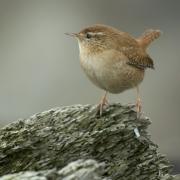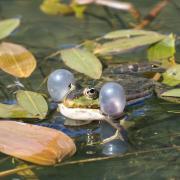What wildlife to look out for this time of year
“The Mole had been working very hard all the morning, spring-cleaning his little home”. This is the first line from The Wind in the Willows by Kenneth Grahame, a set text of many childhoods. Mole is an endearing character, but his real-world counterpart tends to get a bad press. Much maligned by groundskeepers and gardeners alike, this little mammal is actually a bit of mystery to us.
Moles are invisible for most of their lives, but they do like to make an entrance! Once a mole finds a territory it uses its paddle-shaped paws to dig a huge network of tunnels. All the soil has to go somewhere, so every few metres it will dig a vertical shaft up to the surface to deposit the spoils, creating a mole hill.
It can be alarming to see mole hills suddenly appear across your pristine lawn, but they usually only last for a few days. Once the mole completes its maze of tunnels and chambers, new mole hills should only appear very occasionally when the mole is doing maintenance work. One wildlife advantage is that mole hills are great for other creatures, particularly birds, as they bring invertebrates to the surface.
This subterranean lifestyle is ideal for an animal whose diet primarily consists of earthworms, and moles have adapted to live where earthworms are most abundant – under well-watered lawns. They have poor eyesight and rely on hearing, scent and touch to move around their tunnels and find food. If they come across a good source of worms they will eat their fill and then store the surplus in a small chamber called a larder.
Moles are very territorial, sometimes fighting to the death over a patch of ground. This results in a very solitary and secretive life, which we still do not know much about. The only time of year that you might catch a glimpse of a mole is during the breeding season. In February or March, males leave their home and travel above ground in search of females. Once they have mated, the male immediately returns to his territory, leaving the female to rear the young. Moles are born bald and blind, but become independent after five weeks. The young are quickly forced to leave their mother’s territory and scramble above ground looking for a vacant area to start their own tunnel system. Moles are extremely vulnerable at this time and many will be taken by foxes, owls, weasels and cats.
------------------------------------------------------
Common toads
Emerging from their winter hibernation, toads are heading back to breeding ponds this month in search of a mate. They can travel over two kilometres to reach their preferred pond and usually move at dusk after a spell of damp, warm weather.
Scores of toads are killed every year by road traffic as the amphibians try to reach their breeding sites. You may see ‘toad crossing’ signs around Sussex that help to reduce deaths, with local volunteers carrying the toads to safety across the road.
Common toads are Europe’s largest toad and have broad, squat bodies with short toes and webbed hind feet. Covered in raised warts on their back and sides, they have golden brown eyes and a horizontal slit pupil.
Widespread in Britain, but absent from Ireland, common toads can live for up to 40 years. Only male toads croak, and the larger the male the deeper the croak – but females are actually bigger. During mating, a successful male will clasp the female in a tight embrace and remain like this for a few days, waiting to fertilise her long strands of eggs.
To record your wildlife sightings please ring Sussex Wildlife Trust’s wildlife information hotline WildCall 01273 494777.


























